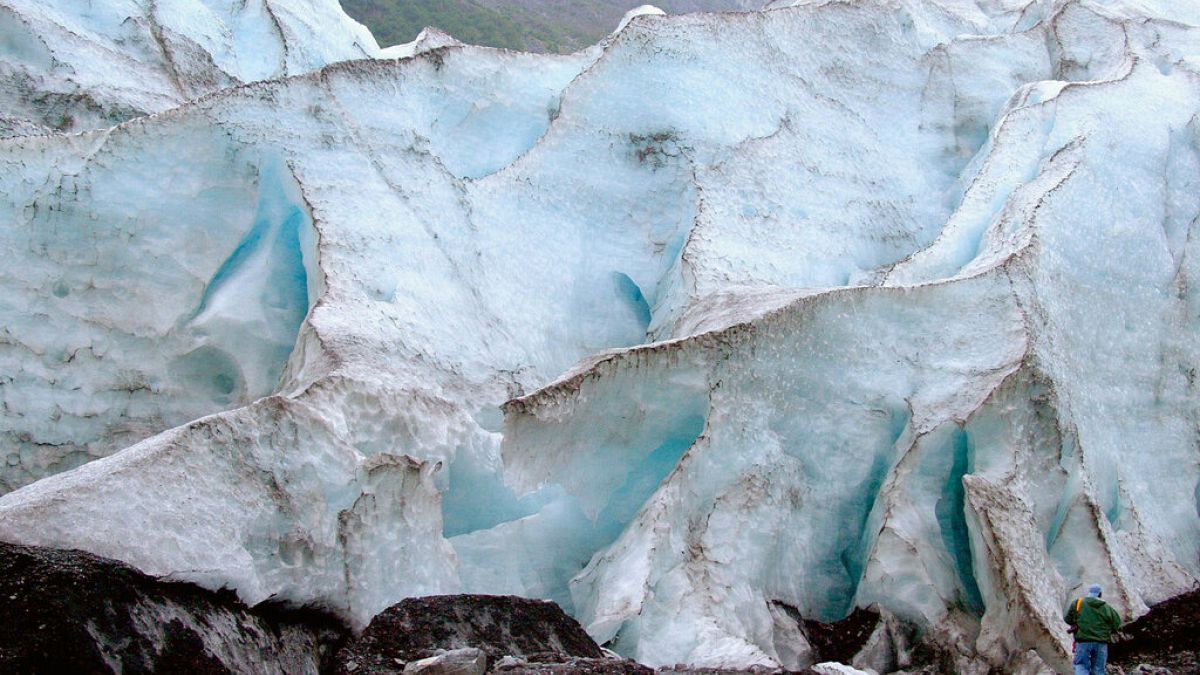The remaining glacial area in the Cilo Mountains has been damaged and degraded, scientists say.
The Cilo Mountains of Hakkari in southeastern Türkiye are home to glaciers that are up to 20,000 years old.
The ice caps currently soar to a height of 4,135 metres above sea level, but they might not stay this way for long.
Vast swathes are being lost each year due to global warming, and scientists say the area should be closed off completely to visitors to protect it.
‘Significant melting has occurred inside the glaciers’
Researchers have observed a 55 per cent loss in the glaciers’ area over the last 30 years, Professor Faruk Alaeddinoğlu from Van Yüzüncü Yıl University (YYÜ) told Turkish newspaper the Daily Sabah.
“The temperature difference is much higher in the Cilo Mountains at 4,135 metres compared to lower areas in the country. As a result, melting occurs much more rapidly,” Alaeddinoğlu said.
“The ice layers, which used to be 200 meters deep, have now fallen below 50 meters.”
According to the scientist, this 50-metre depth is also no longer solid glacier mass.
“Significant melting has occurred inside the glaciers, causing cracks and the formation of channels and tunnels,” he said. “The remaining glaciers have been largely damaged and degraded.”
Türkiye’s 20,000-year-old glaciers may disappear in the next two decades
Alaeddinoğlu warns that if these glaciers are not preserved, they may disappear completely in the next 20 years.
“These glaciers are a heritage, natural wonders that have witnessed some of the oldest remnants of the Anatolian geography. We must protect these wonders.”
The Cilo Mountains were designated as a national park in 2020 and draw hundreds of nature enthusiasts and hikers to the area each year.
Alaeddinoğlu believes the glaciers should now be closed off and covered with a protective layer to help preserve them.
“The area has become very active with human visitors. People are walking on the glaciers, which is risky,” he said. “Visitors should only photograph the glaciers from a distance.”
“We don’t want future generations to only read about these glaciers in books but also see them visually,” he added.
Preservation of glaciers is ‘a matter of survival’
Glaciers across Europe and around the world are facing a similar gloomy fate.
These icy landscapes are now 9,000 billion tonnes lighter than when records began in 1975, according to the World Glacier Monitoring Service (WGMS).
“This is equivalent to a huge ice block the size of Germany with a thickness of 25 metres,” says the service’s director, Prof. Dr. Michael Zemp.
The World Meteorological Organisation (WMO)’s new State of the Global Climate report revealed that from 2022-2024, glaciers underwent their greatest three-year loss on record.
“Seven of the ten most negative mass balance years have occurred since 2016,” says WMO Secretary-General Celeste Saulo, referring to the difference between the amount of ice glaciers gain through snowfall and the amount they lose through seasonal melting.
This is triggering an “avalanche of cascading impacts”, the UN agency warns, from flooding to water scarcity and sea-level rise.
“Preservation of glaciers is not just an environmental, economic and societal necessity,” says Saulo. “It’s a matter of survival.”

